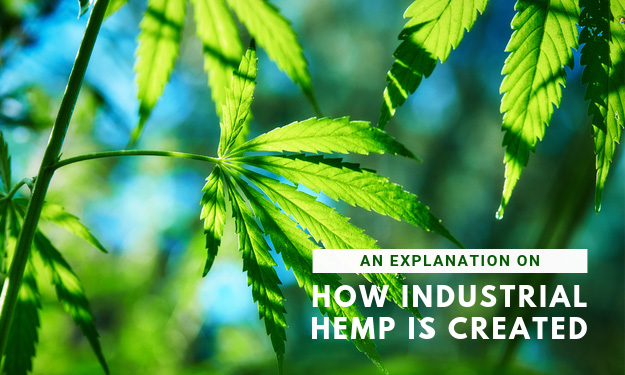An Explanation on How Industrial Hemp is Created
Oct 11th 2019

Industrial hemp is an advantageous plant that has a variety of benefits and uses. As such, the hemp industry is growing at a rapid pace, especially since its production has been federally legalized in all 50 states across America. If you’re interested in potentially producing this beneficial crop, read on to learn how industrial hemp is created.
Growing conditions
Industrial hemp is a versatile plant that can flourish in a wide variety of soil types. However, hemp is best grown in soil that is drained well, isn’t acidic, and has a high nitrogen content. Further, hemp thrives in a mild climate with a humid atmosphere that experiences roughly 25 to 30 inches of rainfall each year. Hemp is generally considered to be a low-maintenance crop as it doesn’t require the use of any chemicals to grow and is an efficient weed suppressor.
Planting
Prior to planting industrial hemp seeds, the soil should reach a temperature that is at least 42 degrees Fahrenheit and have a pH between 6.0 and 7.0. To plant hemp, it is often drilled into the earth using a grain drill. It is often planted in rows and resembles the layout of a cornfield. In addition to rows, hemp can also be planted in a tilled seedbed. When planting the seed, its depth should be around ½ to ¾ inch in the earth.
Harvesting
Once the hemp plant begins to shed pollen, the harvesting process can begin. Depending on a range of environmental conditions, it will typically take 70 to 140 days after planting for the crops to be ready to harvest. Typically, this will occur during mid-August in North America. During this time, high-quality fiber can be harvested from the plant. The tops of this tall plant can be harvested for seed production, while the stalk can be used for many industrial purposes, such as creating textiles and bioplastics.
Processing
Hemp is typically harvested for its fiber or grain. For fiber, the hemp will undergo a retting process which involves breaking down the bonds between the bast and hurds hemp fibers in the plant. To do so, the crop will be left in the field for multiple weeks until a field decomposition process occurs. Then, a sequence of rollers or a hammermill is used to separate the fibers. After the bast fiber has been separated, it will be cleaned and carded.
If the plant has been harvested for grain, a different process will take place. First, the plant will be cleaned and dried before being stored. Then, oil may be removed from the plant using a variety of different extraction equipment and methods.

